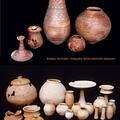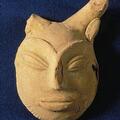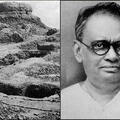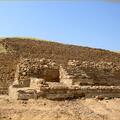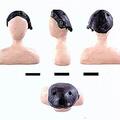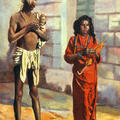Harappan Burial Pottery
Painted and unpainted burial pottery from Harappa. The two largest vessels were found in the same burial and are described below. The other smaller vessels were found in an earlier burial and represent an older style of pottery. The bottom images shows a collection of burial pottery which come from one of the later burials towards the end of the Harappan period, possibly dating to 1900 BCE.
Tall jar with concave neck and flaring rim: The rounded base was originally supported in a ring stand. The black painted geometric designs are arranged in panels with a red slip as background.

